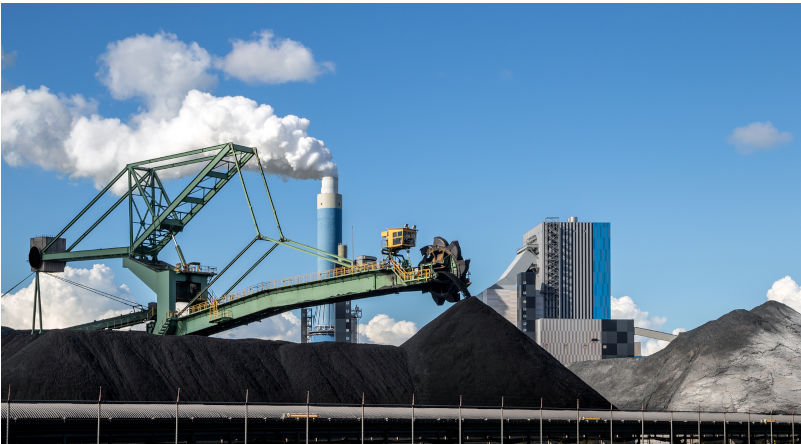Three-quarters of greenhouse gas emissions still originate from the burning of fossil fuels in the energy sector. Australia’s legislation regarding environmental destruction is hindering environmental repair. Increasing demand for copper requires more recycling.
Greenhouse gases – a (slowly) changing picture
You don’t need to know the names of the various greenhouse gases, where they come from or how they work. It’s enough to know just four things:
- That global warming is real and with us now.
- That it’s caused by the increasing concentration of GHGs in the atmosphere over the last 200 years.
- That the principal source of the GHGs in the atmosphere is the burning of coal, oil and gas to produce energy.
- And that the consequences of continuing to kick the climate action can down the road will be catastrophic.
If everyone understood those four points, I’m sure that we’d have a lot more success at reducing GHG emissions than we’re having at present.
That said, the World Resources Institute provides a useful service for those wanting to know a little more about the changing profile of global GHG emissions without getting lost in all the scientific details. It takes a while for all the relevant information to become available and be processed, however, and so the WRI’s most recent analysis published in January relates to 2021.
The first pie chart below shows that CO2 constitutes almost three-quarters (73.6%) of total GHG emissions, with methane a distant second at 17.7%. Nitrous oxide and fluorinated gases together contribute less than 10%. The chart also shows where each of the gases originates but I’ll let you explore that for yourselves in the interactive charts in the linked article.

The next pie chart shows that just over three-quarters (75.7%) of all GHGs combined originate in the production of energy. I think it’s easy to forget just how dominant the energy sector is. For all the talk about renewables — how cheap they are, how reliable, how they are being rolled out at increasing speed — three-quarters of all emissions are produced by the burning of fossil fuels. Until that is reduced to very close to zero, we remain on the path to oblivion.
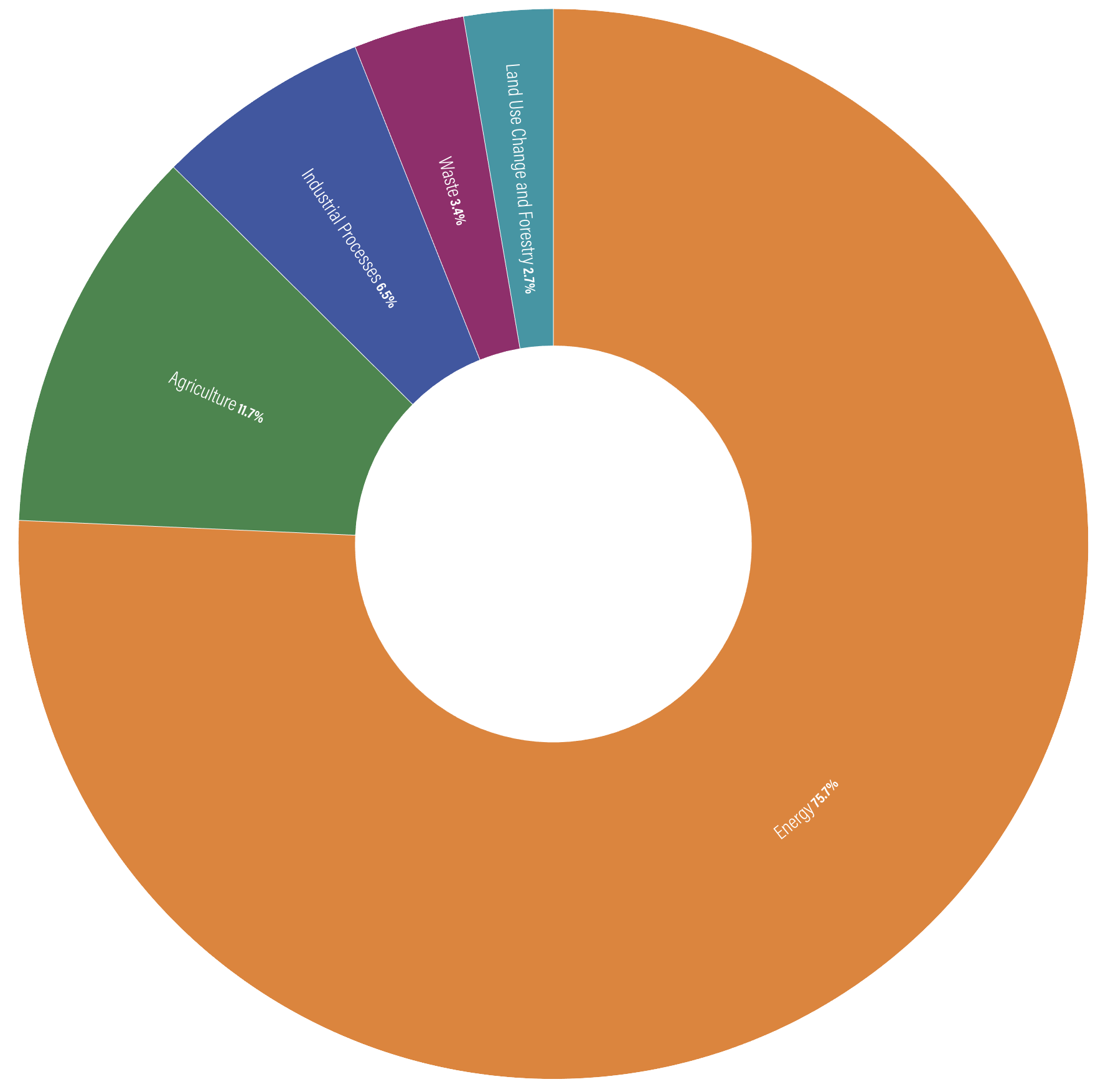
Agriculture (11.7%) and industry (6.5%), which many people could name as significant sources of GHGs, together produce less than a fifth of the total and less than a quarter of the energy sector’s contribution.
Again, I encourage you to explore this chart for yourselves online but just to highlight a couple of points. The use of energy by buildings is responsible for 19% of total GHG emissions – buildings consume electricity and they burn coal, oil and gas directly. Residential buildings are responsible for two-thirds of these emissions.
After buildings, transportation (13.7% of total emissions) and manufacturing and construction (12.7%) are the next largest producers of energy-related emissions.
Finally, how have GHG emissions changed over the three decades between 1990 and 2021? Total emissions have increased by 51% over the period, with industrial processes experiencing the largest percentage increase (225%). The energy sector’s emissions increased by only 60%.
But there’s a trap here: the actual increase in the industrial sector has been only just over 2000 million tons of CO2 equivalent (MtCO2e) over the 31 years, whereas the actual increase in the energy sector has been about 14,000 MtCO2e.
Every ton of GHG we put into the atmosphere matters; it increases global warming. Every ton of emissions that we avoid matters: it reduces the ultimate amount of warming by a fraction of a degree. And everyone, wherever they live, work and have fun, matters: we all have roles to play in reducing emissions. But information such as that produced by WRI shows us in relatively simple terms where we must and can have the biggest impacts.
Easier to get permission to destroy nature than repair it
Why have Murray Cod all but disappeared from the Murray River? Because Murray Cod mostly live near woody “snags” in the river that are created by fallen dead trees but when the river became a navigation route in the 19th century the river red gums that lined the banks, were cleared to “de-snag” the river.
Why have green and golden bell frogs probably become extinct on the NSW Southern Tablelands east of Canberra? Because the shallow, slow-moving Molonglo River that meandered through the boggy, beponded Tablelands has been turned into a deep and fast-moving river to suit agricultural practices over the last 200 years. This has caused the land to dry out and the ponds to disappear.
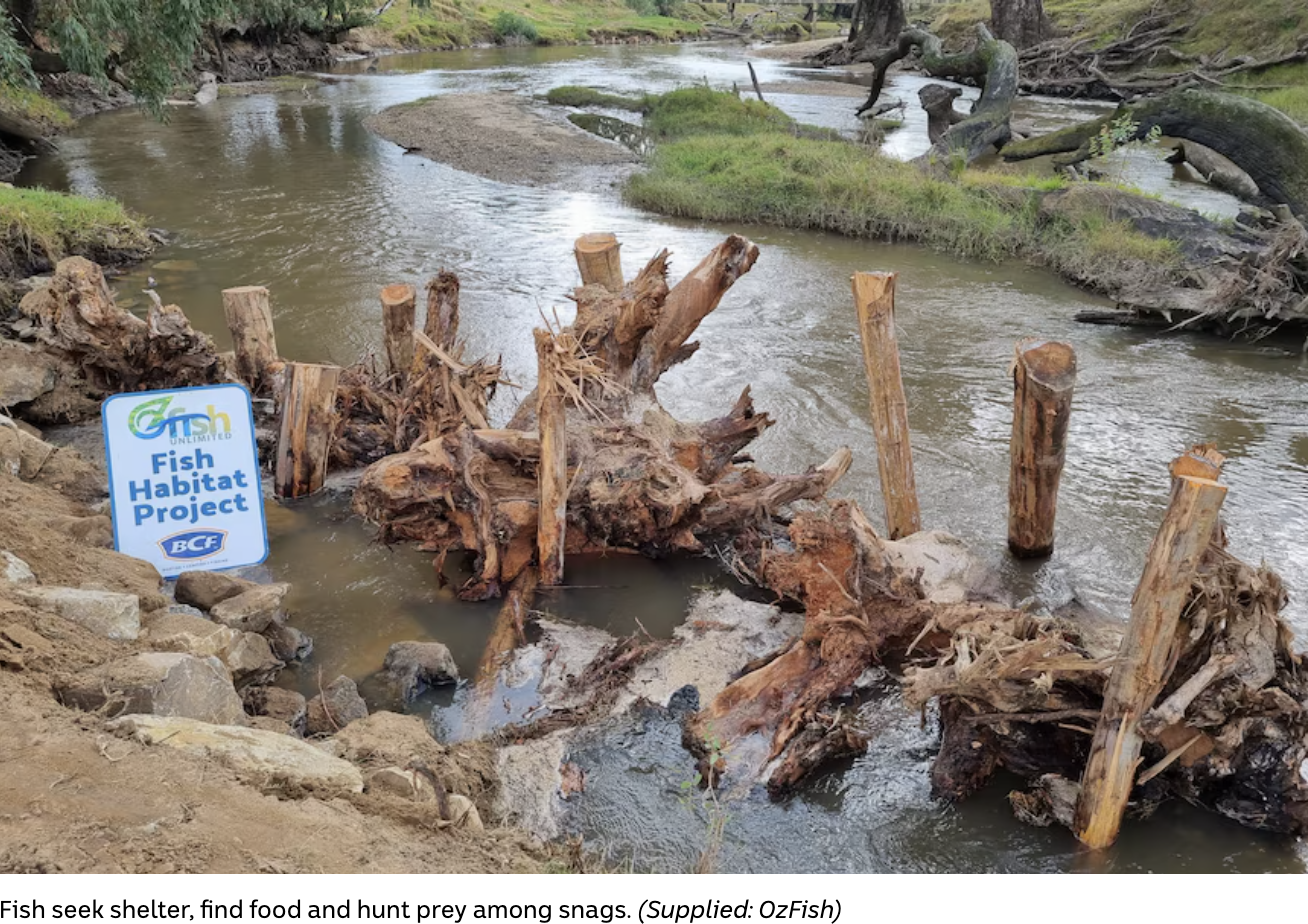
What do these two stories have in common? Concerned individuals developed plans to repair the damage done to the rivers — in the Murray by pushing old trees into the river to create new snags and in the Molonglo by creating leaky weirs to slow the river and re-establish flood plains and ponds — but were thwarted for years by the labyrinthine government approvals processes they needed to navigate. Sadly, probably thwarted for too long to save our colourful amphibian.
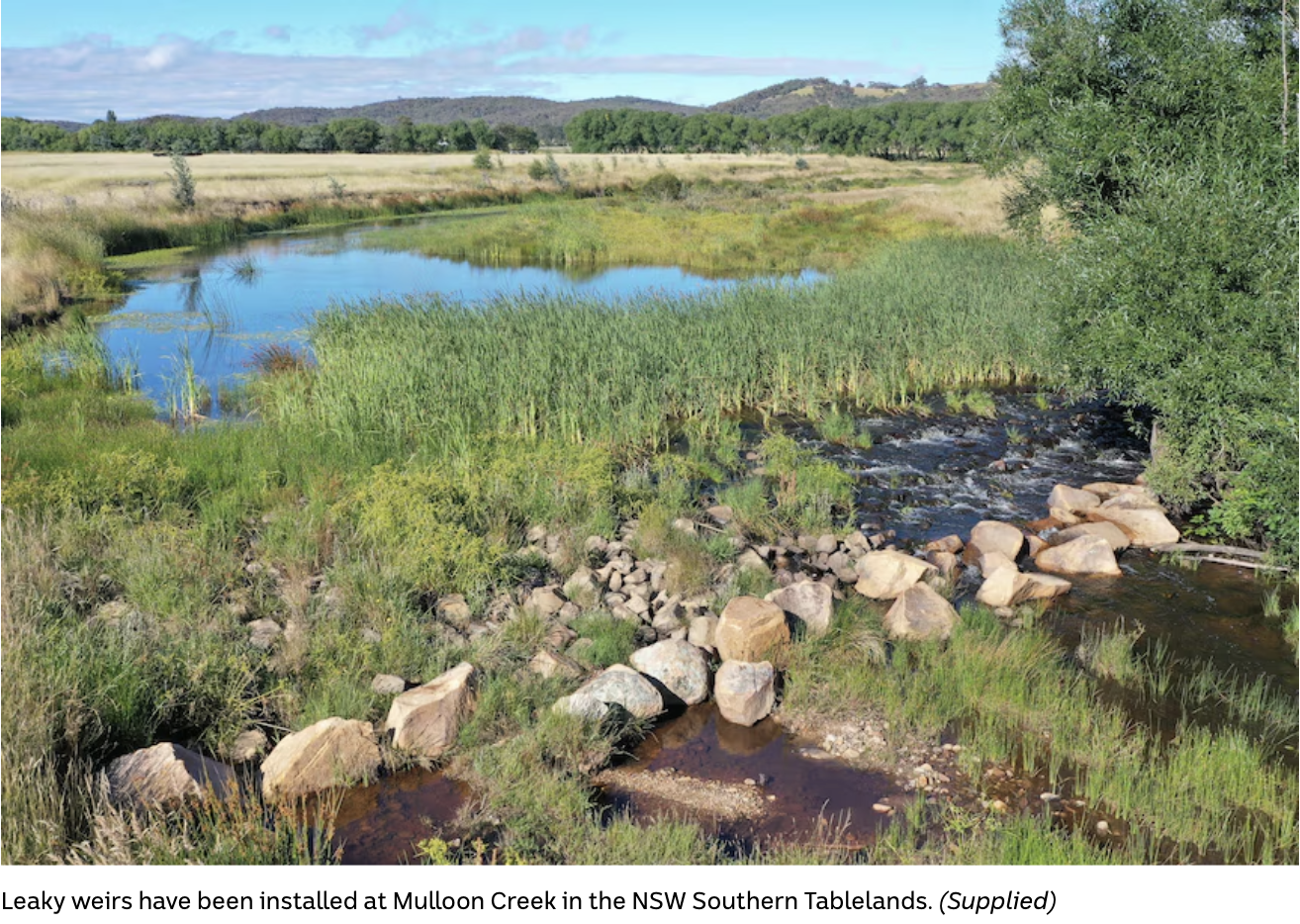
Australia’s existing environmental protection laws were created to protect nature from excessive harm, not to improve nature and therein lies the problem. According to Dr Bell-James, an associate professor of law in Queensland, “When people want to do restoration, in the eyes of the law, it’s just another kind of interference with the environment. So for that reason, restoration practitioners have to go and apply for the same sorts of permits that a developer does or that a mining company does. It’s like trying to fit a square peg into a round hole.”
To help nature repair projects get going more quickly, all levels of government need to co-ordinate their approval procedures, and self-assessable codes should be adopted which allow nature repair projects to skip some of the regulations developed for projects that destroy nature.
(I smugly thought I was responsible for a neologism with “beponded” but apparently not. I was beaten to it by Charles Edward Crane in 1937.)
ReCuperating copper
Copper is a fantastic conductor of electricity (second only to silver), making it invaluable in systems of electricity generation and transmission and telecommunications – in fact these uses account for 70% of copper use worldwide. It is also an excellent conductor of heat, highly resistant to corrosion, flexible, malleable and forms alloys well, properties that make it vital for a wide range of industrial, construction and household functions and appliances. It even has antimicrobial properties.
The demand for copper is expected to increase by 50% between 2023 and 2050, by which time clean energy technologies will make up 50% of total demand.
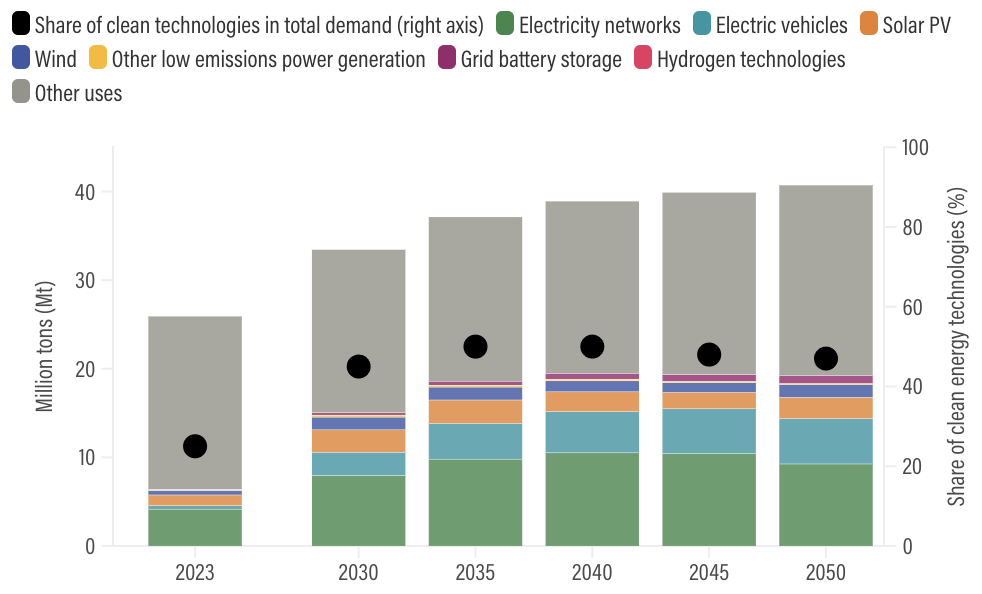
The increasing demand requires increasing supply, much of which will be met by extending the life of existing mines and opening new ones, possibly up to six large new mines a year between now and 2050. But copper mining is far from good for the environment, or in many cases the workers, and it takes a long time to get a new copper mine going.
Another of copper’s many attributes is that it can be 100% recycled without losing any of its properties. Compared with mining and extraction, recycling uses considerably less energy and produces less air pollution and greenhouse gas.
Recycled copper currently provides about a third of the world’s supply but this could be increased considerably by increasing the recycling of products (particularly electronic waste, the fastest growing waste stream) at the end of their lives. This would also stop about 6 million tons of copper going to landfill each year. The world’s top three sources of end-of-life copper at present are China (46% of the world supply), Europe (23%) and the USA (10%).
Increasing the supply of end-of-life copper, in an environmentally and socially responsible way, requires:
- A reliable and steady supply that involves producers, retailers, consumers, logistics companies, all levels of government and NGOs raising awareness and developing take-back, collection and transport systems for end-of-life products.
- Policy frameworks and incentives to develop and expand high-standard, advanced-technology recycling capacity.
- Strong market demand for recycled copper, including the use of ‘pure enough’ recycled copper for applications that do not need the highest purity.
Ubeequitous beenefactors
Australia has more than 2000 species of native bee. They range in size from 2mm-24 mm and have phenomenally diverse appearances and habits. Despite the enormous benefits they provide to humans and the environment, many species are threatened by the usual (human-induced) culprits: urban development, agriculture, deforestation, pesticides, climate change and invasive species, including the European honey bee.
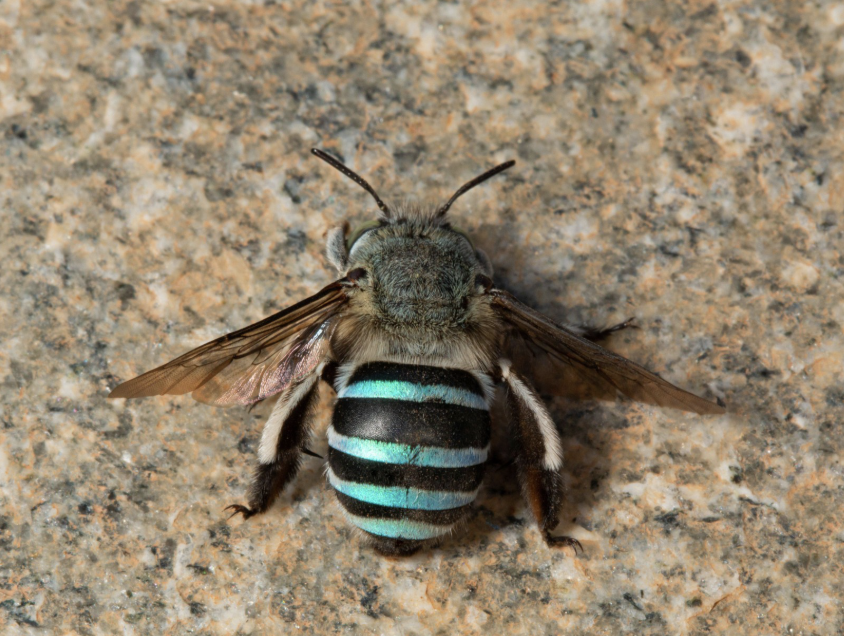
Blue-banded bees like to live alone but have their rellies nearby. They dislodge pollen by holding the flower and shaking their bodies rapidly – a process known as buzz pollination or sonification.
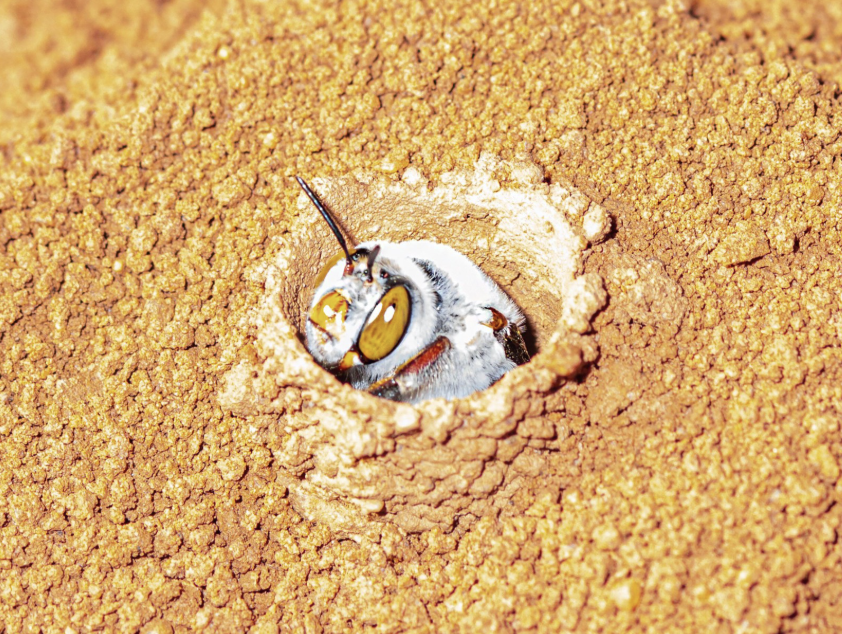
Dawson’s burrowing bee is big: 23mm long with a wingspan of 45mm. The female was the role model for frackers. She digs 15mm-35mm down into clay or packed soil and then goes horizontally to create a nest (brood cell) for her egg.
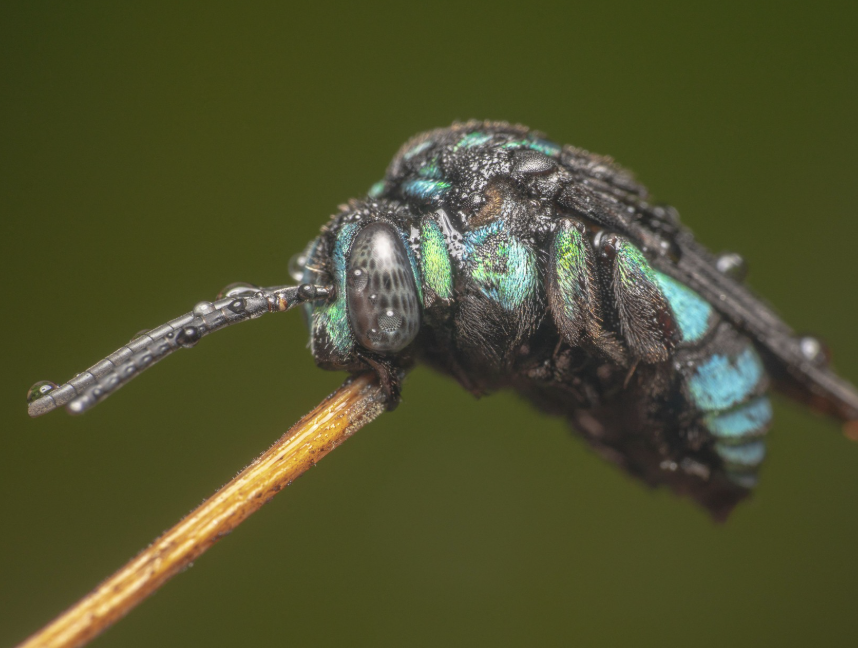
Neon cuckoo bees, you guessed it, lay their eggs in the brood cell of a Blue-banded bee, who have very thoughtfully already provisioned their nest with pollen and nectar for their own expected young who will starve to death when they hatch.
Peter Sainsbury is a retired public health worker with a long interest in social policy, particularly social justice, and now focusing on climate change and environmental sustainability. He is extremely pessimistic about the world avoiding catastrophic global warming.
